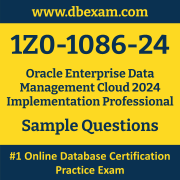01. You have account dimensions in two different applications that must be kept in sync. Given a business requirement that nodes added to either application must be shared with the other, what should you do?
a) Create one bi-directional node type converter between the two applications.
b) Create two node type converters: one with Application1 accounts as the source and Application2 accounts as the target, and another with Application2 accounts as the source and Application1 accounts as the target.
c) Create one node type converter with Application1 accounts as the source and Application2 accounts as the target, and specify a reverse conversion in requests when sharing in the opposite direction.
d) Create three node type converters: one with Application1 accounts as the source and Application2 accounts as the target, another with Application2 accounts as the source and Application1 accounts as the target, and a third for bi-directional sharing.
02. In your application, you have nodes for cost centers. You want to group them two ways: by department and geography. What are two ways to accomplish this?
(Choose two.)
a) Create two hierarchy sets; one where parent nodes are departments and child nodes are cost centers; and another where parent nodes are geographical regions and child nodes are cost centers.
b) Create a list viewpoint for cost centers, then add parents for departments and geography.
c) Create two node sets; one with a group of departments and another with a group of geographical regions.
d) Create one hierarchy set with different top nodes for departments and geography, and add shared cost center nodes as children.
03. A node exists in a hierarchy. Which three types of properties could be present?
(Choose three.)
a) Inherited properties
b) Relationship properties
c) Hierarchy properties
d) Node properties
e) Shared properties
04. Which statement is true about permissions?
a) The Owner permission on a view enables a user to configure the view and grants full access to the data objects in that view.
b) When you grant a permission at a higher level, such as Owner, it includes all of the permissions at lower levels, such as Participant.
c) Permissions assigned to a dimension do not also apply to the hierarchy sets and node types that they contain.
d) By default, when you assign the Participant permission to a user or group, their data access is set to Write.
05. How does an information model represent data relationships?
a) Through tables and columns
b) Through mathematical formulas
c) Through flowcharts and diagrams
d) Through graphs and charts
06. What is an API in the context of sharing data across applications?
a) A set of rules and protocols for communication between applications
b) A database management system used for data storage
c) A data visualization tool
d) A file format for exchanging data between applications
07. The Owner permission for an application lets users perform which three tasks?
(Choose three.)
a) Modify application registration.
b) Assign permissions for an application’s data objects to other users and groups.
c) Import viewpoints from external applications.
d) Manage an application’s data objects.
e) Delete service administrators from an instance.
08. When registering an application, what is typically required to be configured?
a) Application version control
b) Application deployment schedule
c) Application roles and permissions
d) Application encryption algorithms
09. How are data import and export typically performed?
a) Storing data in a centralized database accessible to all applications
b) Manually copying and pasting data between systems
c) Sharing data files via email attachments
d) Using data integration tools or ETL (Extract, Transform, Load) processes
10. Which two objects can you transfer using templates?
(Choose two.)
a) Data
b) Requests
c) Applications
d) Dimensions
e) Transaction history
 The Oracle Enterprise Data Management Cloud Implementation Professional (1Z0-1086-24) Sample Question Set is designed to help you prepare for the Oracle Enterprise Data Management Cloud 2024 Certified Implementation Professional certification exam. To become familiar with the actual Oracle Certification exam environment, we suggest you try our Sample Oracle 1Z0-1086-24 Certification Practice Exam.
The Oracle Enterprise Data Management Cloud Implementation Professional (1Z0-1086-24) Sample Question Set is designed to help you prepare for the Oracle Enterprise Data Management Cloud 2024 Certified Implementation Professional certification exam. To become familiar with the actual Oracle Certification exam environment, we suggest you try our Sample Oracle 1Z0-1086-24 Certification Practice Exam.